Beyond Design Inc. has added the capability to rotocast hollow objects of almost any size. Current capacity is about 8 feet in the largest dimension. But larger is possible.
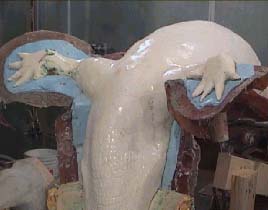
We use a cold process with urethane & silicone molds, so tooling costs are low and production runs can be cost effective for as few as several pieces.
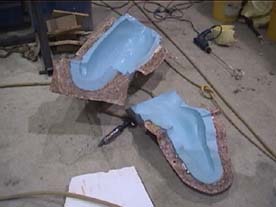
We use a variety of urethane plastics. Some of these are UV resistant, some are low cost and some have very high strength. Durometer can vary from 20 to 90, from very flexible to quite rigid. Some can be filled with fibers or metal particles to provide strength or a metallic appearance. Colorants can be added. Fillers can be added for texture and reinforcement. The urethane is either hand or machine mixed, depending on the specific formulation and the length of the production run.
The shell material is poured into the mold and the mold is rotated for anywhere from 6 minutes to 30 minutes depending on the formulation. If the item is to remain hollow it is then allowed to stand until the demold time has elapsed. If it is to be foam filled, it can then be poured. The foams usually take about 5 minutes to rise and another 5 to 10 minutes to set before the mold stripping can begin.
Cycle times are short, with the demold time of some systems as little as 30 minutes. These alligators were rotocast with a 90 durometer Urethane Plastic and are filled with a 4-pound density, rigid urethane foam. The demold time was less than 1 hour, with a full cycle time of less that 2 hours. Smaller objects can be set up with multiple molds on each rotocaster to increase production.
We are doing development work in the area of rotocast composites. In this application various surface skins and foams are possible. With some, the skin and foam chemical are the same and only the formulation changes. This process will expand the range of possibility and lower the cost.
Objects can be filled with urethane foam in a variety of densities and properties. These densities and properties can vary from light and rigid to strong and rigid to variable degrees of flexibility. This, combined with variable properties of the skin material, gives a huge range of options for the finished products. We can rotocast statues, urns, architectural elements and a huge variety of other objects. The low cost and ease of tooling production invites higher levels of detail.
|
|
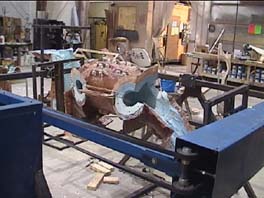
Our goal is to promote the rotocast process as an addition to existing systems. We expect to market the supporting technology: pumps, guns, process controls, chemicals and cements once we have completed our development work.
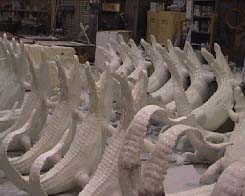
Most of our work is R & D. The primary reason that we have started in the theatrical market was for the challenge of it; to attempt doing the near impossible, and to make money at it. We have found this to be an effective method to accelerate learning. We appreciate challenging projects and share the knowledge gained with our suppliers and customers.
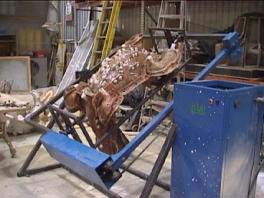
It is our goal to transfer the knowledge we gain into systems that will have a broader market and with businesses interested in
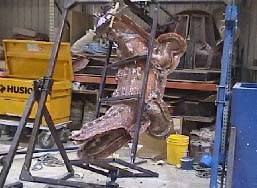
change. Rotocasting is an application that we at Beyond Design Inc. see many developments that extend beyond the current markets.
We are designing larger machines with more power and better controls. We are also working on a multi-station machine for higher production. These, combined with the pumping systems that are in prototype stage, should give the capability and the materials technology to compete in a broader market. As we prepare to market this equipment and materials technology, we are seeking companies that will benefit from it. Call us for an estimate of mold making and production costs.
|





